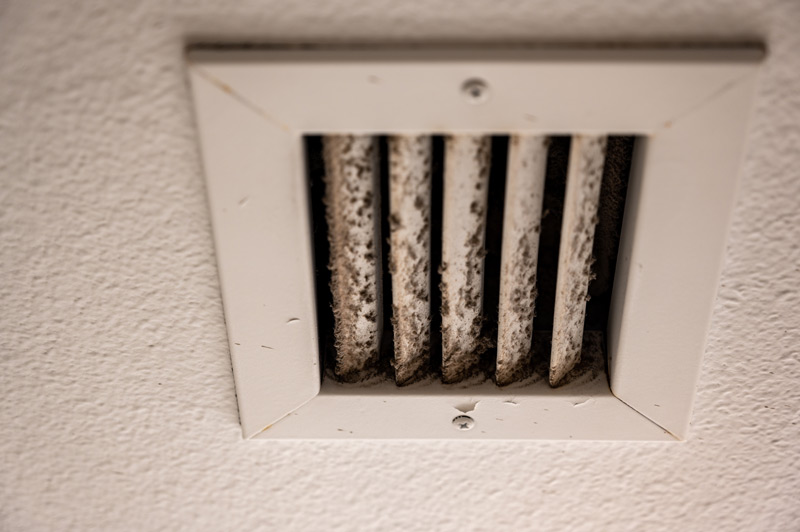Mold growth in your home’s HVAC system can pose serious health risks and negatively impact your indoor air quality.
Mold growth in your home’s HVAC system can pose serious health risks. It can also impact your indoor air quality. You need to know the signs of mold toxicity and take measures to ensure a healthy environment. This article discusses the dangers of mold to your health and the signs of mold toxicity. We also discuss how it can infiltrate your HVAC system and how to prevent mold growth in your HVAC system.
The Dangers of Mold to Your Health
Mold is a type of fungus that grows in damp or humid conditions. Exposure to mold can cause various health issues. Exposure can be worse for those with allergies, asthma, or weakened immune systems. Mold can trigger allergic reactions in sensitive individuals. It causes symptoms such as sneezing, runny nose, itchy eyes, and skin rashes. Mold spores can irritate the airways and worsen asthma symptoms. In some cases, mold exposure can lead to respiratory infections. Those are more likely to happen in individuals with compromised immune systems.
How Mold Can Infiltrate Your Home’s HVAC System
Mold can infiltrate your HVAC system through various means. Mold thrives in humid conditions. If your humidity levels are above 60%, it creates an ideal environment for mold growth. Poor ventilation can lead to stagnant air and moisture buildup in your HVAC system. This moisture buildup can promote mold growth. Leaks in your HVAC ducts can bring in moisture and mold spores from unconditioned spaces.
Signs of Mold Toxicity from Your HVAC System
If you suspect that mold may be present in your HVAC system, look for the following signs.
- Musty odors. A persistent musty smell throughout your home could be a sign of mold growth within the system. This is especially noticeable when your HVAC system is running.
- Visible mold growth. Inspect your HVAC components for visible mold growth. Areas to check include air filters, air ducts, and vents.
- Health symptoms. If you notice respiratory issues only when at home, it could be a sign of mold toxicity from your HVAC system.
How to Prevent Mold in Your HVAC System
To prevent mold growth in your HVAC system, consider implementing the following strategies. Use a dehumidifier or air conditioner to maintain indoor humidity levels between 30-50%. This creates an unfavorable environment for mold growth. Be sure to clean and maintain your HVAC system. It helps to promote adequate airflow and reduce the risk of mold growth. Check your HVAC ducts for leaks and have them sealed. This helps to prevent moisture infiltration and mold growth. Schedule regular HVAC maintenance, including filter changes and system inspections. These appointments help to identify and address potential mold issues early.
Contact Us
Mold toxicity in your home’s HVAC system can pose serious risk to your health and your indoor air quality. Understanding the dangers of mold and the signs of mold toxicity is vital. With this knowledge, you can take preventive measures to ensure a healthy environment. Stay vigilant and proactive in maintaining your HVAC system. If you need help with that, Ardmore Fresh Air is here to help. Contact us to help you address any mold issues that may arise in your HVAC system.

